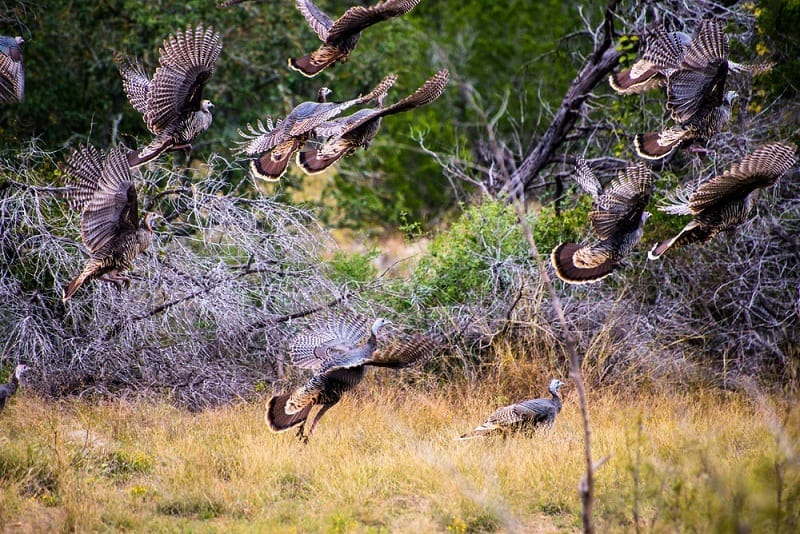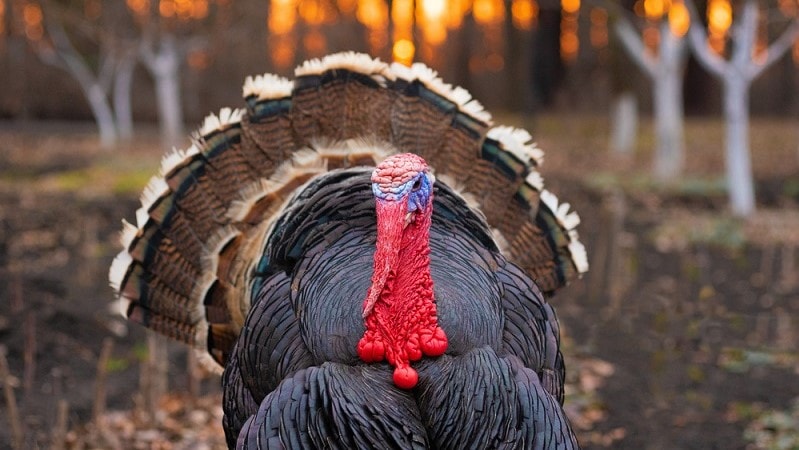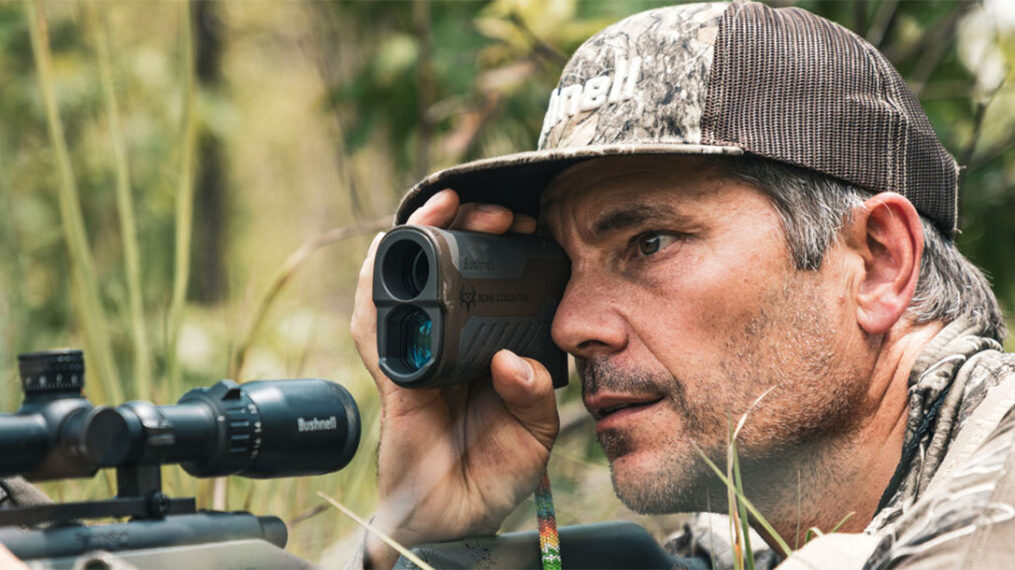Turkey hunting is an experience like none other. The longer you hunt, the more you learn, and even the most experienced of turkey hunters learn something new every season. The learning curve experienced by new turkey hunters can be quite vast.
However, by knowing how to avoid the most common turkey hunting mistakes, you will soon be filling your tags and freezer in short order.
Contents (Jump to Topic)
ToggleThe following are several mistakes that I have personally made when turkey hunting. In my opinion, one of the biggest mistakes is calling excessively prior to flydown. Of course, there are several other… But: By sharing these mistakes, and how best to avoid them, I hope to prevent you from falling victim to these same missteps.
Calling Excessively Prior To Flydown
There are far fewer sounds as sweet to the ears of a turkey hunter as that of a tom gobbling at daybreak.
It can often be tempting to call repeatedly to a tom while he is still roosted prior to flydown, especially when your every call is met by his enthusiastic response. However, excessively calling to a roosted tom also can draw hens to the gobbling turkey’s position. Hens naturally respond to the gobbles of toms during the spring breeding season.
If an interested hen responds to a tom, they will likely lead him away, leaving you little chance of calling him within bow range.
I have found that lightly yelping once at daybreak, is often enough to draw a roosted tom’s attention, without stirring up excess gobbling activity that will pique the interest of hens. This is a simple, yet deadly trick that often seals the deal when the going gets tough.
Being Impatient
One fantastic characteristic of turkey hunting is that a hunter can remain mobile, and move about to position themselves within close proximity of gobblers.
However, there is a fine line between moving out of necessity, and moving just for the sake of moving. I cannot begin to list the number of turkeys that I have cost myself throughout the years due to impatience. In most of these cases, had I just waited five more minutes, I would have been presented a shot…
Just because you do not hear a tom gobbling, does not mean that he is not working in your direction. Always give any turkeys that are silently approaching ample time to respond to your calls.
In recent years, my success has increased solely by remaining stationary for no less than an hour at any one given location.
Check out this video for more on being patient while hunting turkeys.
Setting Up Too Close To Roost Sites

It is only natural for any hunter to attempt to hunt as close to a roost site as possible. After all, the closer you are to a tom’s roost sight, the shorter distance he must be called upon departing from the roost. Unfortunately, a scenario of this nature often does not work out as one would hope, and your hunt ends before it even begins.
I managed to make this mistake myself, this past weekend. I heard a tom gobbling on roost upon arriving where I was to hunt, and knew precisely where the gobble had originated (read.. a group of turkey – what are they called)
I attempted to sneak within 100 yards of the roost, only to be spotted. I was left with no shot opportunity, as the tom departed in the opposite direction.
If you discover a particular roost site, only approach the area to a distance at which you can assure absolute concealment. It is much easier to call a turkey an extra 100 yards than it is to reconcile your hunt after spooking a tom from his roost.
Not Practicing Like You Hunt
Working a tom within bow range is difficult enough without being forced to deal with the heartbreak of missing your shot when it presents itself.
Shooting scenarios encountered on a turkey hunt are far different than that which most archers practice in their backyard on a weekly basis.
This presents a unique set of challenges for many bowhunters:
Most archers choose to bow hunt from a ground blind, as this method of hunting aids in concealing the motion involved with drawing a bow.
However, shooting from a ground blind typically involves taking seated shots that commonly come at awkward angles. It is important to practice this type of shooting in the months leading up to season.
It can also be difficult to judge yardages from a seated position, especially if this is not something that you are used to. The vitals of a turkey are small, and require an arrow to be placed with precision. Misjudging the distance of a turkey by only five yards can easily lead to a missed shot. For this reason, a quality rangefinder is recommended.
Not Choosing Equipment Wisely

There are also some factors that must be considered when selecting what archery gear to bring along when hunting turkeys.
If this gear is not chosen wisely, unanticipated problems can potentially arise, leading to the demise of the day’s hunt. One gear-related factor that is worthy of consideration is that of which bow you choose to go afield with. As mentioned, most archers who bowhunt for turkeys, do so out of a ground blind.
A bow that features a lengthy axle-to-axle measurement can be quite cumbersome to use in the confines of a blind, making a more compact bow the better choice.
More about essential turkey hunting gear
Another equipment-related issue that many bowhunters find difficulty with when hunting for turkey relates to broadhead selection. A small diameter cut-on-contact head does little to compensate for sub-par accuracy when attempting to strike the small-scale vitals of a turkey.
In this case, the use of a larger diameter fixed blade, or expandable head would be preferable (read.. the perfect broadhead for turkey hunting).
Avoiding Unnecessary Hardship
Despite our best efforts, we as turkey hunters will inevitably falter in our efforts from time to time. However, the avoidance of these missteps will assist an archer in navigating around a number of the sport’s most common pitfalls.
With ample attention to detail and a dose of persistence, you will be well on your way to a spring season worth of success.
Please feel free to leave any comments you might have. We always appreciate feedback from our readers.






